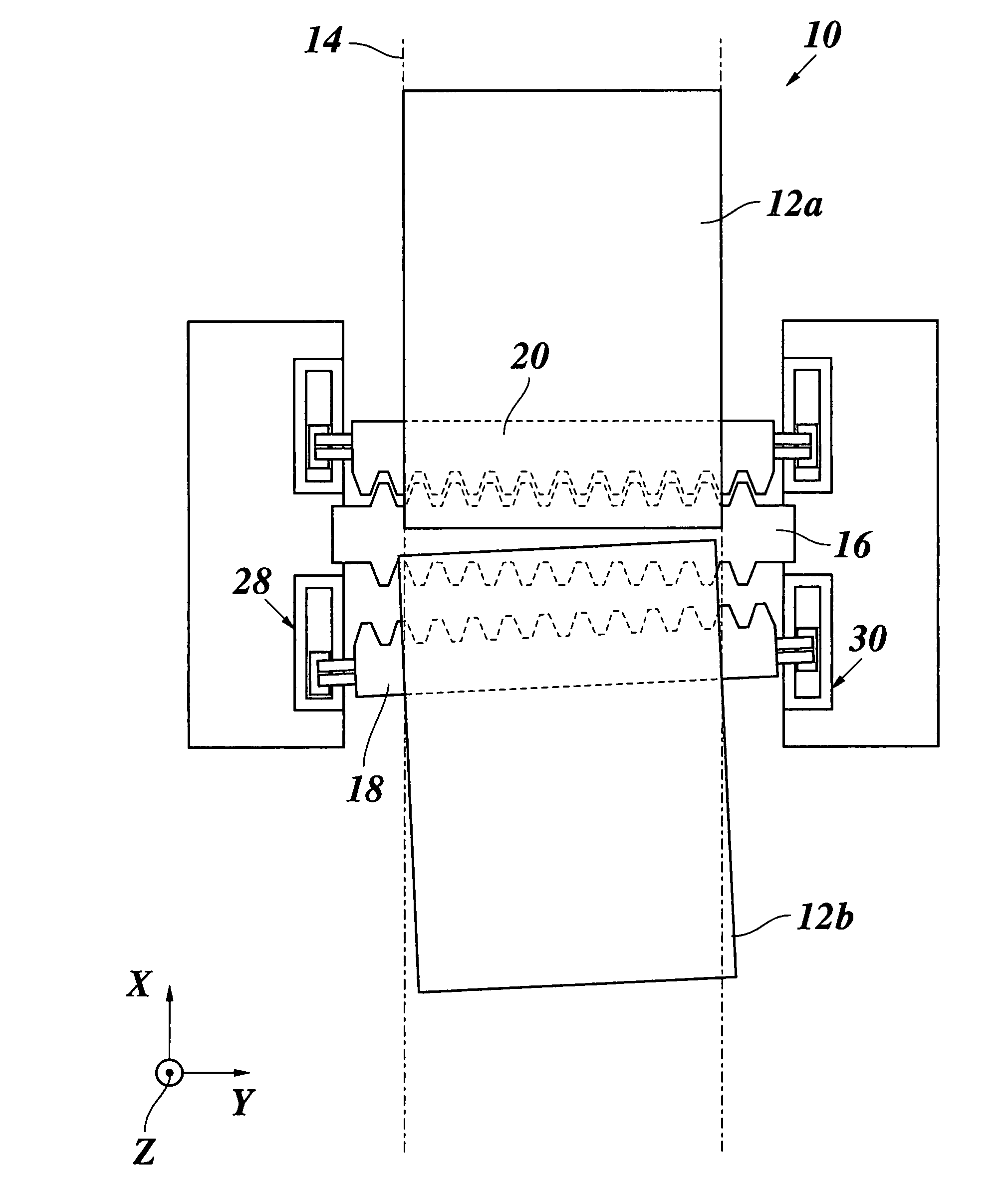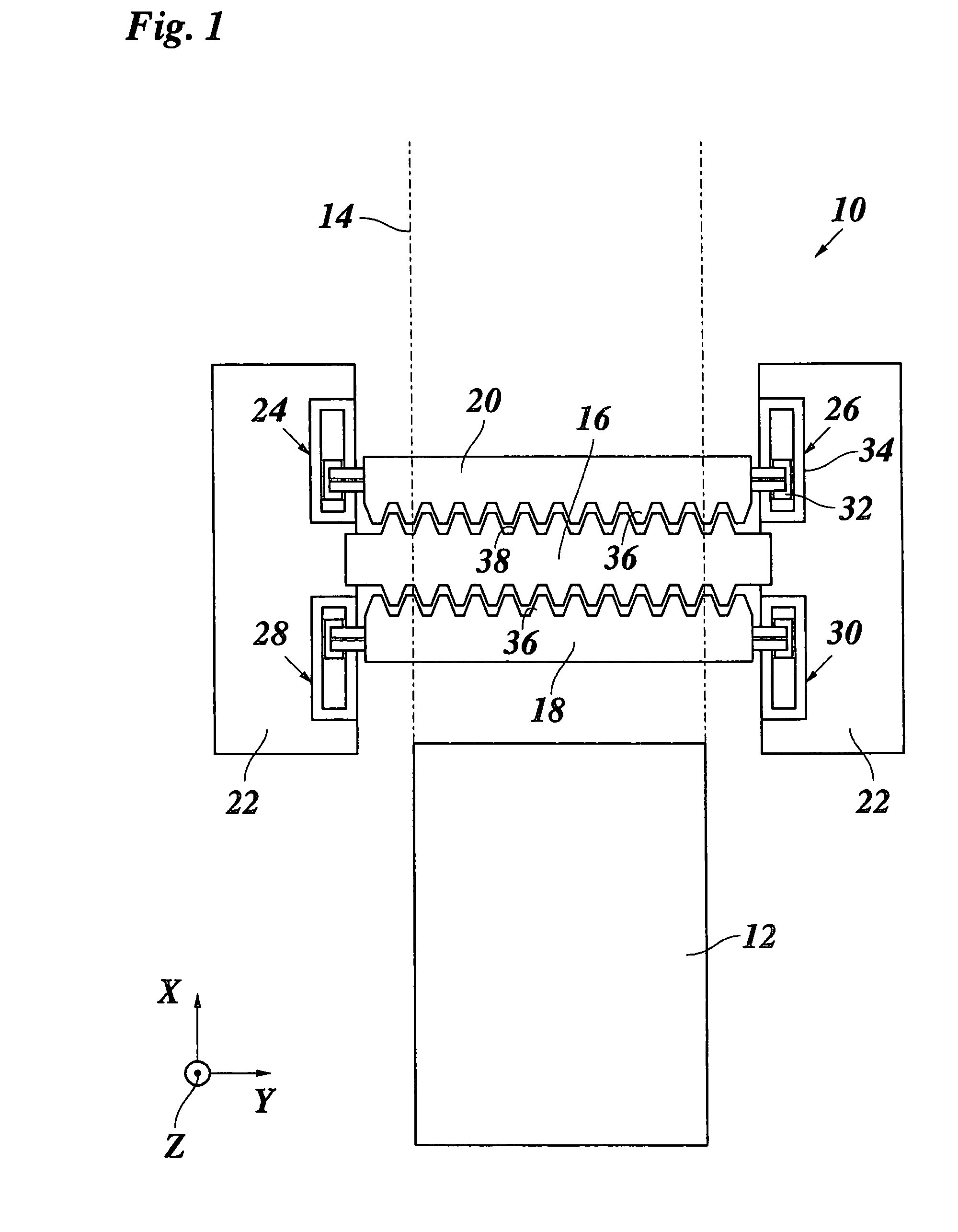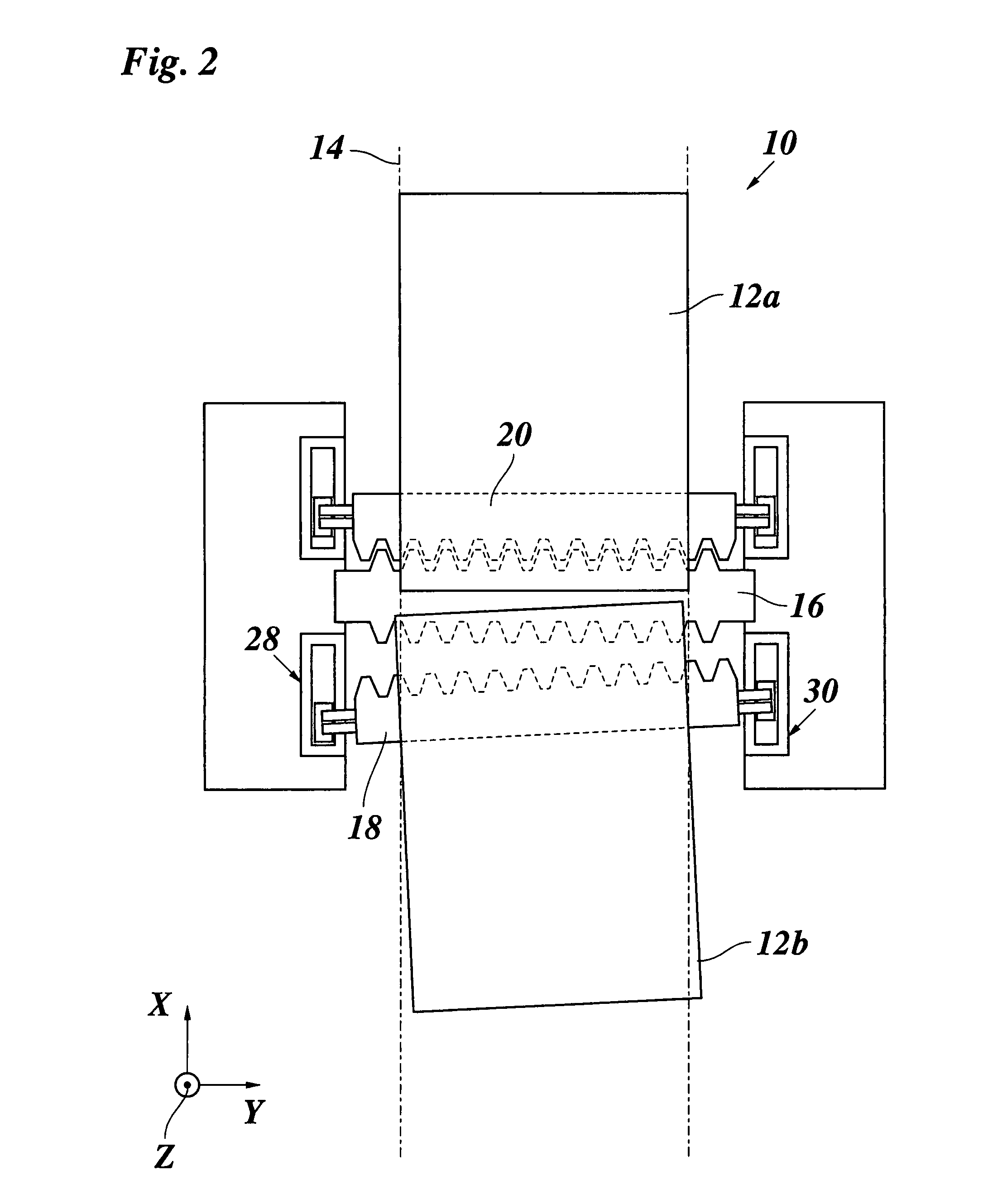Stepper mechanism
a stepper mechanism and stepper technology, applied in the direction of article feeders, registering devices, article separation, etc., can solve problems such as distortion of printed images, and achieve the effect of reducing friction and reducing frictional resistan
- Summary
- Abstract
- Description
- Claims
- Application Information
AI Technical Summary
Benefits of technology
Problems solved by technology
Method used
Image
Examples
Embodiment Construction
[0025]As is shown in FIG. 1, a stepper mechanism 10 is used for transporting a substrate 12, a sheet in this example, along a transport path 14. The transport mechanism 10 comprises a stationary member 16, a first transport member 18 and a second transport member 20. These members extend widthwise across the transport path 14. In the example shown, the stationary member 16 is arranged between the two transport members 18, 20.
[0026]The stationary member 16 is supported on frames 22 that are disposed on either side of the transport path 14.
[0027]The left and right ends of both transport members 18, 20 are supported on the frames 22 via separate drive units 24, 26, 28 and 30. In the example shown, each drive unit comprises a slide 32 which supports one end of the transport member and is guided and driven in a stator 34 which, together with the slide 32, forms a linear displacement system. Thus, each slide 32 is movable in a transport direction X in parallel with the transport path 14, ...
PUM
 Login to View More
Login to View More Abstract
Description
Claims
Application Information
 Login to View More
Login to View More - R&D
- Intellectual Property
- Life Sciences
- Materials
- Tech Scout
- Unparalleled Data Quality
- Higher Quality Content
- 60% Fewer Hallucinations
Browse by: Latest US Patents, China's latest patents, Technical Efficacy Thesaurus, Application Domain, Technology Topic, Popular Technical Reports.
© 2025 PatSnap. All rights reserved.Legal|Privacy policy|Modern Slavery Act Transparency Statement|Sitemap|About US| Contact US: help@patsnap.com



